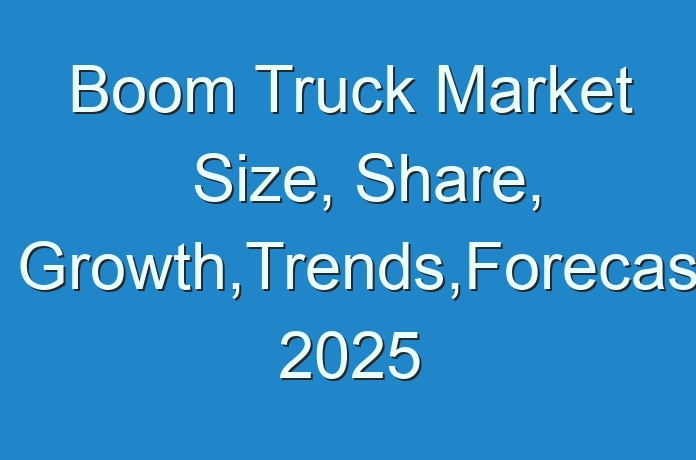
Boom trucks are vehicles mounted with telescopic boom crane equipment to lift cargo or workers in applications such as logistics, maintenance, and construction. These trucks enable workers to carry and maneuver freight or load as required. Usually the truck body and crane equipment are manufactured by different OEMs resulting in long-term partnerships and memorandum of understanding. These boom trucks feature a variety of specifications such as lifting capacity, lifting reach, payload & hauling capacity, and application. They are used for several purposes such as lifting workers for maintenance & inspection of high-rise structures & buildings, pumping concrete, and loading & unloading cargo from warehouses & other trucks. The boom truck market is witnessing a heavy customization trend to cater to the intricate needs of every industry.
Want to know the obstructions to your company’s growth in future? Request a brochure @ https://www.transparencymarketresearch.com/sample/sample.php?flag=S&rep_id=26690
The rising demand from end-user industries such as construction, utility, and telecom is the key factor driving the boom truck market globally. The growing expenditure on infrastructure in developing countries such as India, China, and Brazil is creating substantial opportunities for the market. Technological advancements and the manufacture of customized boom trucks suited for specific tasks are predicted to help increase the productivity & efficiency of all end-user industries. The suitability and aptness offered by boom trucks in the telecom, construction, and logistics sectors are fueling the demand for boom trucks. Furthermore, the utility industry is also generating significant traction in the boom truck market due to increased maintenance activities in electricity and telecom wiring grids throughout the globe. Street light maintenance, building repairs, and general maintenance are key utilities requiring boom trucks. However, the maintenance and upkeep costs of these trucks are high, hindering the market to a certain extent.
The boom truck market is divided, based on type, into the bucket and crane segments. Bucket boom trucks, also known as aerial boom trucks, are used to perform off-ground maintenance work and to lift personnel. On the other hand, crane boom trucks are employed for industrial and heavy applications including the loading and unloading of goods and payloads on and off the carrier truck. These cranes are also available in a variety of lifting capacities needed for various applications. Furthermore, on the basis of end-user industry, the boom truck market can be divided into the following categories: construction, logistics, utilities, and others. Construction and utilities are substantially lucrative in all the regions.
Purchase Premium Research Report @ https://www.transparencymarketresearch.com/checkout.php?rep_id=26690<ype=S
In terms of geography, the boom truck market can be distributed over Asia Pacific, Europe, North America, Latin America, and Middle East & Africa. North America and Europe are significant markets for boom trucks with well-established public facilities requiring constant repair and tending. However, strict policies with regards to emissions and safety slightly hamper the boom truck market in the region. Asia Pacific is also anticipated to provide significant opportunities for the market. The growing expenditure on infrastructure and related projects is predicted to boost the demand for boom trucks in the construction and utilities sectors. Furthermore, the Middle East is also heavily investing in infrastructure and lavish construction projects, propelling the demand for boom trucks in the region.
Prominent players operating in the global boom truck market include Ruthmann GmbH, Palfinger, Altec, Aspen Equipment, and Interlake Crane.
Read Our Trending Press Release Below: https://www.prnewswire.com/news-releases/rising-awareness-about-cleanliness-and-hygiene-across-public-places-to-sow-the-seeds-of-growth-across-the-forecast-period-of-2020-2030-tmr-301248244.html





